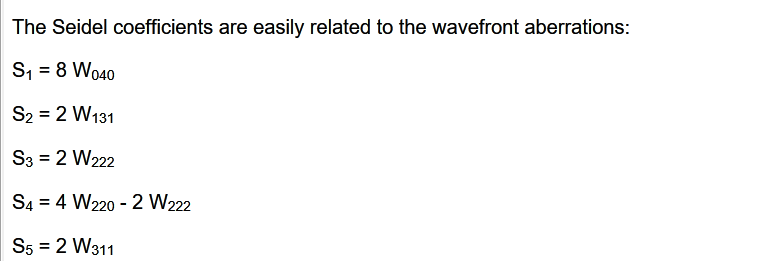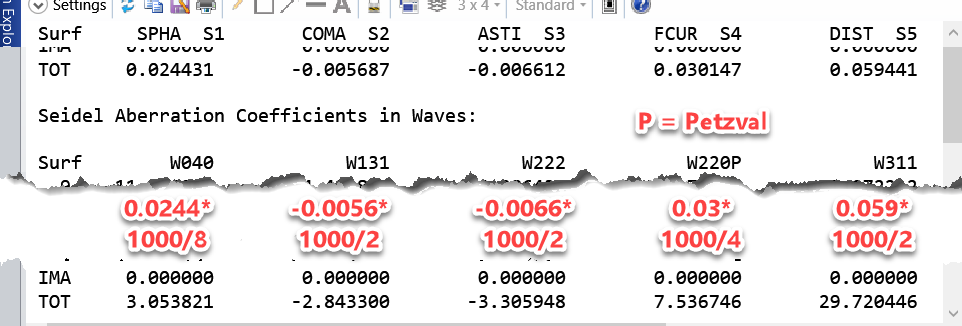Quote from help file: The Analyze Tab (sequential ui mode) » Image Quality Group » Aberrations (Image Quality Group) » Seidel Coefficients
OpticStudio will compute the unconverted Seidel, transverse, longitudinal, and some wavefront coefficients. The Seidel coefficients are listed surface by surface, as well as a sum for the entire system. The coefficients listed are for spherical aberration (SPHA, S1), coma (COMA, S2), astigmatism (ASTI, S3), field curvature (FCUR, S4), distortion (DIST, S5), longitudinal color (CLA, CL), and transverse color (CTR, CT).
- The values displayed in the seidel diagram are the coefficients, and the values in merit function operands are in waves. Both values can be found in the seidel coefficients analysis feature.
- The units are always the same as the system lens units, except for the coefficients measured in waves.
- When converting the coefficients in lens unit to the wavefront aberrations in waves, we need to use the below conversion. (Note W220P is the Petzval curvature, it uses S4 = 4W220P)



The sample file is attached for your reference. The wavelength is set to 1 um to simply the conversion between the lens unit and the aberration in waves. factor: 1mm/1um =1000







